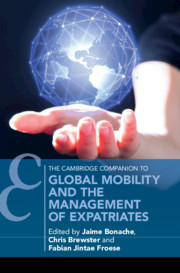Book contents
- Global Mobility and the Management of Expatriates
- Cambridge Companions to Management
- Global Mobility and the Management of Expatriates
- Copyright page
- Contents
- Figures
- Tables
- Contributors
- 1 Global Mobility
- Part I The Expatriation Process of Corporate Expatriates
- Part II Different Types of Expatriates and Stakeholders
- 7 Short-term Assignees, International Business Travellers, and International Commuters
- 8 Self-initiated Expatriates
- 9 Skilled Migrant Careers
- 10 Women and Global Mobility
- 11 Global Families
- 12 Roles and Challenges for Global Mobility Departments
- Index
- References
7 - Short-term Assignees, International Business Travellers, and International Commuters
from Part II - Different Types of Expatriates and Stakeholders
Published online by Cambridge University Press: 12 November 2020
- Global Mobility and the Management of Expatriates
- Cambridge Companions to Management
- Global Mobility and the Management of Expatriates
- Copyright page
- Contents
- Figures
- Tables
- Contributors
- 1 Global Mobility
- Part I The Expatriation Process of Corporate Expatriates
- Part II Different Types of Expatriates and Stakeholders
- 7 Short-term Assignees, International Business Travellers, and International Commuters
- 8 Self-initiated Expatriates
- 9 Skilled Migrant Careers
- 10 Women and Global Mobility
- 11 Global Families
- 12 Roles and Challenges for Global Mobility Departments
- Index
- References
Summary
This chapter explores international working options other than expatriation and migration, focusing, in particular, on three of the main alternative ‘other’ ways of arranging international work: short-term assignments (STAs), international business travel (IBTs), and international commuting (McNulty & Brewster, 2019). These ‘other’ ways of working in another country tend to be shorter and, crucially, do not involve relocating ‘home’ or taking the family, if there is one, with them. The chapter explores some of the advantages and disadvantages of these alternative forms of international experience.
- Type
- Chapter
- Information
- Global Mobility and the Management of Expatriates , pp. 153 - 180Publisher: Cambridge University PressPrint publication year: 2020
References
- 3
- Cited by



